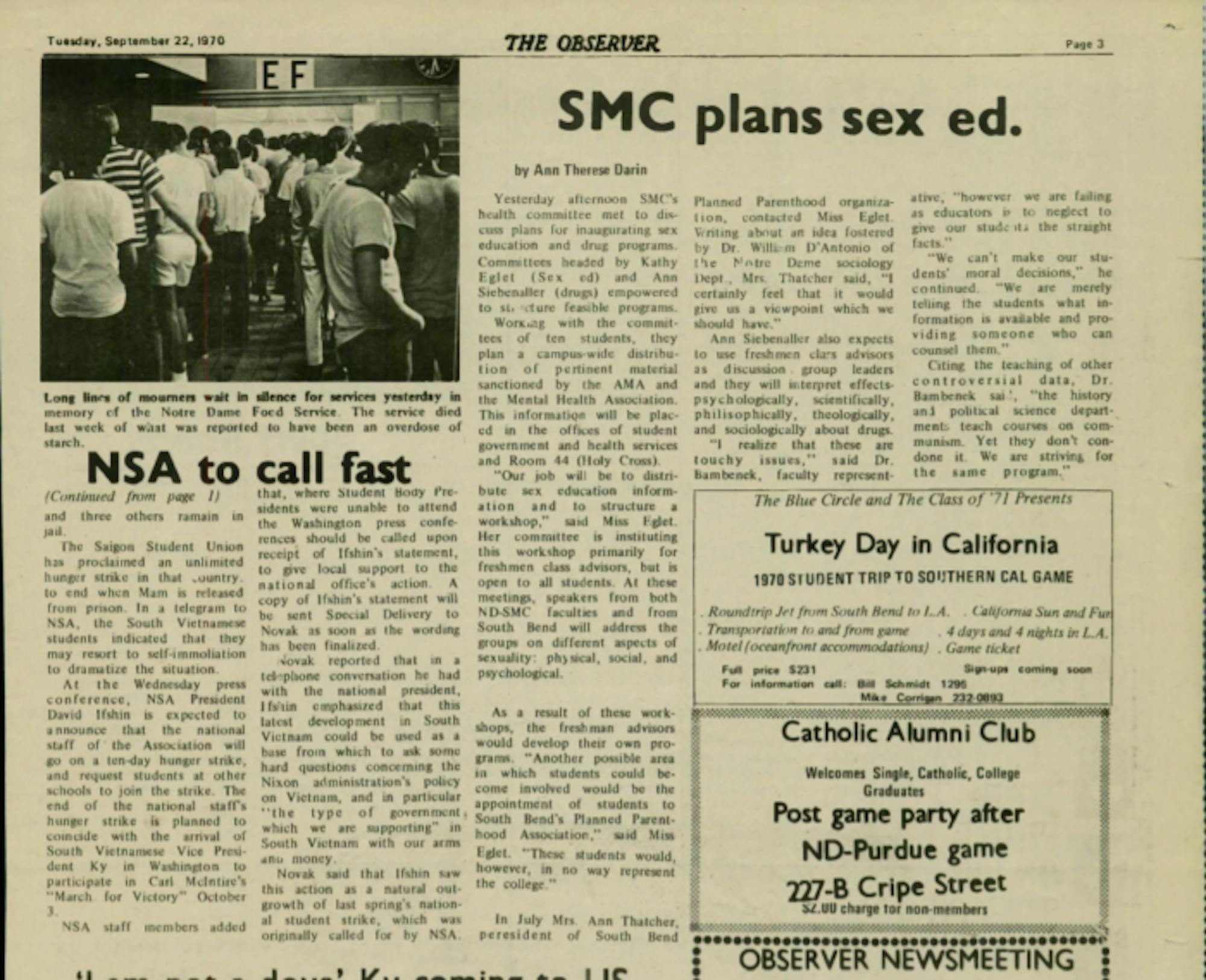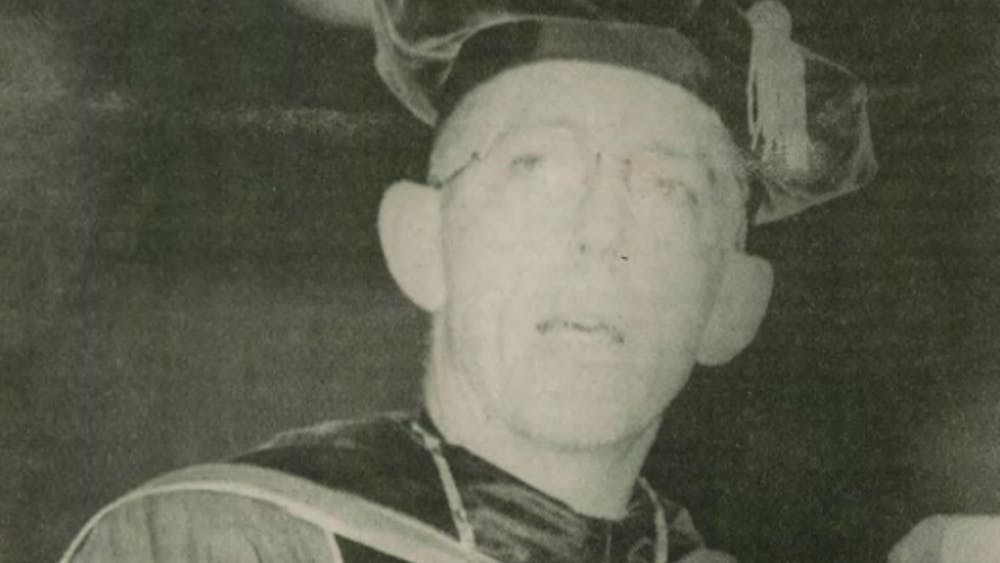On Monday, March 29, 1968 — two years since the first publication of The Observer — Vol. 11 No. LIX was published. Under the bold Scooby Doo-style letters that read “The Observer,” in between two bold back lines was the volume number, the date and “University of Notre Dame.”
Three days later on Monday, April 1, 1968, The Observer published Vol. 11 No. LX with a new addition to the bottom of those bold letters: “serving the Notre Dame and Saint Mary’s College community.

Observer archives, March 29, 1968

Observer archives, April 1, 1968
A little over two years after its establishment, The Observer began to serve and report on the Saint Mary’s College community discussing issues such as housing, enrollment rates and the Colleges’ initiatives.
On Tuesday, Sept. 22, 1970, The Observer published Vol. V No. 10 filled with attention-grabbing headlines: “SMC proposes drug policy,” “Saigon SU asks help from NSA” and “SMC plans sex ed.”

Observer Archives, Sept. 22, 1979
The “SMC plans sex ed.” article, written by Ann Therese Darin, spoke on the initiative by the Saint Mary’s Health Committee — a student-led committee — to “discuss plans for inaugurating sex education and drug programs.” The article details the student’s efforts to have a campus-wide distribution of pertinent material sanctioned by the Mental Health Association (MHA).
The information was placed in the student government offices, health services and Room 44 in Holy Cross. Darin was able to speak to committee member Kathy Eglet, who elaborated on the initiative.
“Our job will be to distribute sex education and structure a workshop,” Eglet told Darin.
The distribution of sex education material to students is nothing new on Saint Mary’s campus. However, in recent years, student efforts to form abortion rights groups have been met with pushback from the school.
This has not stopped students from ensuring their peers have access to resources such as contact with local South Bend clinics and readily available contraception such as condoms.
While Saint Mary’s has seen progress in hosting and facilitating conversations on sex and faith — specifically through its most recent series on sex and spirituality: “Wonderfully Made” — there has been little to no progress on fostering spaces for discussion of bodily autonomy and on making contraception accessible.
Talk of sex education and Catholic values has been a topic of recent discussion on the Saint Mary’s campus. The stigma decreases every day with student, faculty and staff effort, yet the road ahead is a long one.
Fifty years later, and students have taken initiative and worked towards changing campus culture on sex, bodily autonomy and the intersection between sex and faith. Students are still spearheading conversations, leading initiatives and offering resources by their dorm rooms just like Room 44 in Holy Cross, back in 1970.
“I realize that these are touchy subjects,” said faculty representative Dr. Bambeneck in the 1970 article. “However, we are failing as educators ... to neglect to give our students the straight facts.”
“We can’t make our students’ moral decisions,” Bambeneck added.
There was an understanding then, and there is an understanding now, that conversations on sex and spirituality need to be had. This understanding is evident through current initiatives such as “Wonderfully Made,” the opening of the LBGTQ+ Center and other student-led efforts. However, the struggle to reconcile sex education and Catholic values is still as prevalent as ever. Saint Mary’s has seen some progress, but also faced many setbacks, and the conversation is far from over.









